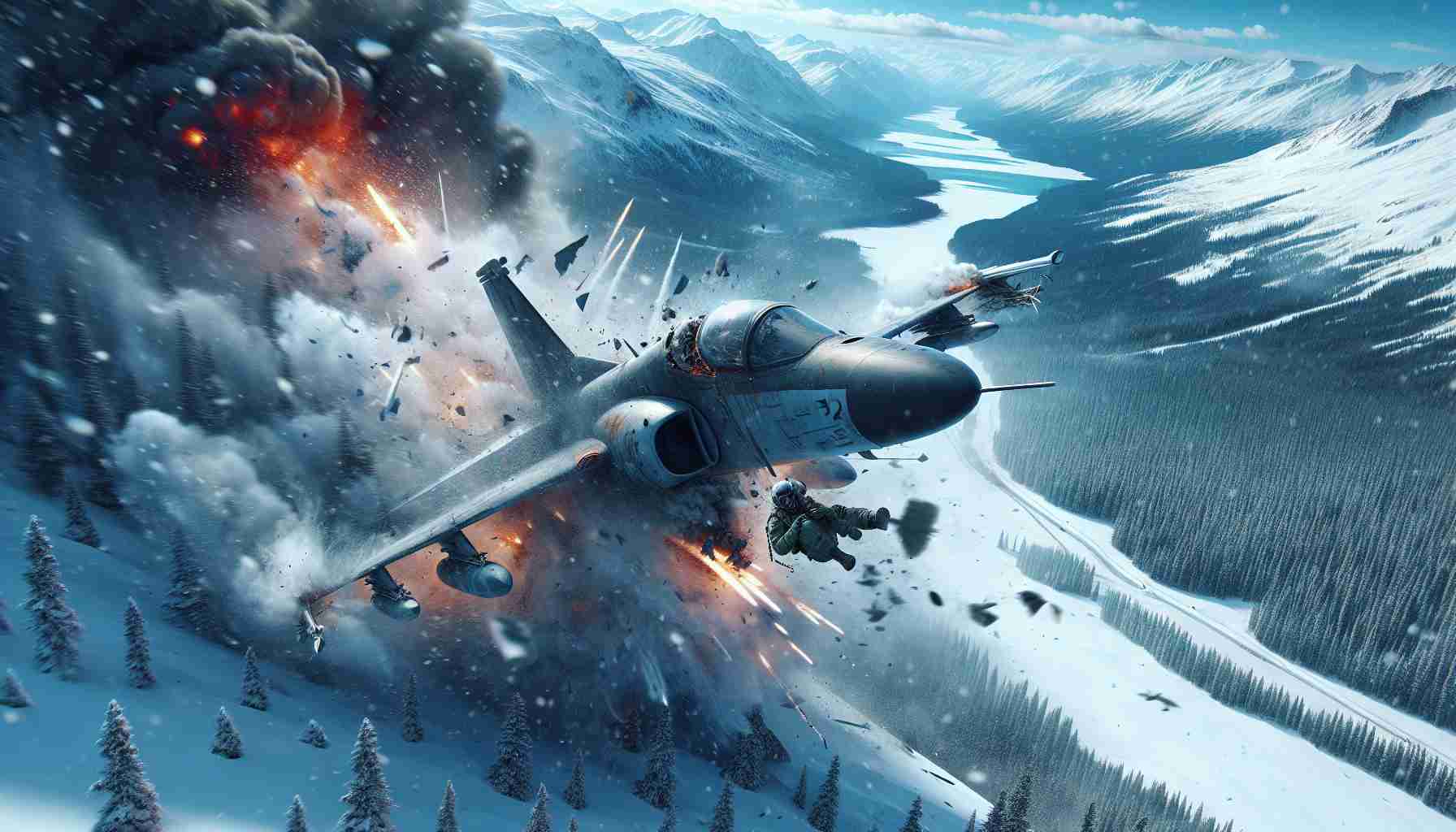A dramatic incident unfolded at Eielson Air Force Base in Alaska as a single-seat F-35 fighter jet crashed, sending shockwaves through the military community. The astonishing event occurred on January 28, 2025, when the advanced aircraft sustained significant damage during an accident on the runway. Fortunately, the brave U.S. Air Force pilot escaped unharmed and was swiftly transported to Bassett Army Hospital for evaluation.
Speculation looms regarding whether the mishap happened during takeoff or landing, and investigations are currently underway to uncover the details behind this startling crash. Air Force officials assert their commitment to ensuring the safety of all personnel involved, highlighting the importance of thorough investigations to prevent future incidents.
Located about 25 miles south of Fairbanks, Eielson Air Force Base is home to a fleet of F-35s, the cutting-edge fighters capable of extraordinary feats—flying over 12 hours straight and reaching nearly every corner of the Northern Hemisphere. This latest event adds to a growing list of F-35 incidents, including a notable crash in May involving a jet from Texas and another linked to pilot action in October of the previous year.
As this riveting story develops, one thing remains clear: the priority of pilot safety is paramount amid the complexities of modern military aviation. Stay tuned as more information emerges from the investigation!
F-35 Fighter Jet Crash: What You Need to Know!
Key Takeaways
- A single-seat F-35 fighter jet crashed at Eielson Air Force Base in Alaska on January 28, 2025.
- The Air Force pilot escaped without injury and received medical evaluation at Bassett Army Hospital.
- Investigations are ongoing to determine whether the crash occurred during takeoff or landing.
- Eielson AFB, located near Fairbanks, hosts a fleet of F-35s known for their long-range capabilities.
- This incident is part of a trend, with multiple F-35 crashes reported in recent years.
- The Air Force emphasizes the importance of pilot safety and thorough investigations to prevent future mishaps.
Shocking F-35 Crash Raises Questions on Military Aviation Safety
In the wake of a recent crash involving an F-35 fighter jet at Eielson Air Force Base in Alaska, discussions surrounding the safety and reliability of advanced military aircraft have surged. The incident, which took place on January 28, 2025, saw the jet sustain significant damage, yet thankfully, the pilot was unharmed. This incident adds to several recent mishaps involving F-35s, raising concerns about operational protocols.
Key Features of the F-35 Fighter Jet
– Stealth Technology: Designed for low observability to evade enemy radar.
– Multi-Role Capabilities: Can perform ground attack, reconnaissance, and air defense missions.
– Advanced Avionics: Equipped with state-of-the-art sensors for situational awareness.
Pros and Cons of F-35 Fighter Jets
Pros:
– Superior combat capabilities and versatility.
– Enhanced survivability due to stealth features.
– Interoperability with allied forces enhances strategic operations.
Cons:
– Significant development costs and delays.
– Ongoing concerns regarding maintenance and operational readiness.
– Recent incidents have led to questions about pilot training and aircraft reliability.
Frequently Asked Questions
1. What are the potential causes being investigated for this F-35 crash?
Investigations are focusing on whether the mishap occurred during takeoff or landing, with additional scrutiny on pilot actions and environmental conditions that could have contributed to the accident.
2. How does this crash fit into the broader context of F-35 operational incidents?
This particular crash adds to a worrying trend of F-35 incidents, which include crashes linked to both mechanical failures and pilot errors in the preceding months, indicating a need for improved training and system reliability.
3. What advancements are being made to enhance the safety of F-35 aircraft?
The Air Force continually reviews pilot training programs and aircraft technology updates. Current efforts are directed toward addressing maintenance issues and improving the responsiveness of safety systems.
For more insights on military aviation updates, you can visit Defense.gov.












